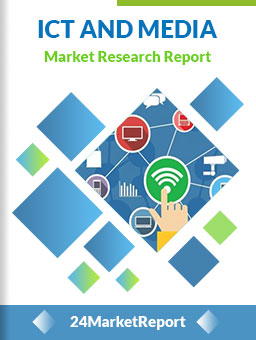
Download FREE Report Sample
Download Free sampleMARKET INSIGHTS
Global Business Process Management (BPM) Platform market size was valued at USD 717 million in 2024. The market is projected to grow from USD 774 million in 2025 to USD 1,173 million by 2032, exhibiting a CAGR of 7.5% during the forecast period.
Business Process Management (BPM) Platforms are enterprise-level software solutions designed to automate repetitive tasks, manage core processing workflows, and handle complex process logics. These systems enable organizations to optimize, monitor, and accelerate business processes through workflow automation, rule-based decision making, and process analytics. Key functionalities include process modeling, execution, monitoring, and continuous improvement capabilities.
The market growth is driven by increasing digital transformation initiatives across industries, as enterprises seek to improve operational efficiency and reduce costs. While cloud-based BPM solutions currently dominate with over 60% market share due to their scalability, on-premises deployments remain relevant for industries with stringent data security requirements. Major players like IBM, Oracle, and SAP are investing heavily in AI-powered process mining capabilities, further expanding the market potential. Recent developments include Appian's 2024 launch of its AI Process Platform, combining BPM with generative AI features for enhanced automation.
Digital Transformation Initiatives Accelerating BPM Adoption
The global push toward digital transformation continues to be a primary growth engine for the BPM platform market. Organizations across industries are investing heavily in BPM solutions to modernize legacy systems, with the cloud-based BPM segment expected to grow at 8.2% CAGR through 2030. Financial services firms lead this adoption, where process automation can reduce operational costs by 30-50%. Recent developments include major banks implementing AI-powered BPM to automate loan approval workflows, cutting processing times from days to hours.
Regulatory Compliance Requirements Fueling Market Expansion
To know more about market statistics, Download a FREE Sample copy
Increasing regulatory scrutiny across healthcare, finance, and manufacturing sectors is driving demand for BPM platforms with robust audit capabilities. In the healthcare sector alone, BPM adoption for compliance management grew 18% year-over-year as organizations implemented HIPAA and GDPR-compliant process workflows. The 2023 rollout of updated Basel III banking regulations has similarly accelerated BPM deployments in risk management operations.
➤ A recent industry benchmark found that organizations using BPM for compliance management reduced audit preparation time by 67% while decreasing compliance violations by 43%.
Furthermore, the convergence of BPM with emerging technologies like process mining and robotic process automation (RPA) is creating new use cases. Manufacturing firms are combining these technologies to achieve end-to-end supply chain visibility, reducing procurement cycle times by 40% in pilot implementations.
Integration Complexities with Legacy Systems Impeding Growth
While BPM platforms offer transformative potential, many enterprises face significant technical barriers during implementation. A recent industry survey revealed that 62% of BPM projects encounter integration challenges when connecting to legacy ERP and CRM systems. These integration hurdles often lead to project delays averaging 4-6 months, with associated cost overruns exceeding initial budgets by 25-30%.
Other Restraints
Change Management Resistance
Cultural resistance to process changes remains a persistent challenge, particularly in organizations with entrenched manual workflows. Change management issues account for nearly 40% of failed BPM implementations, as employees often revert to familiar processes despite new system deployments.
Skills Gap in Advanced BPM Tools
The shortage of professionals skilled in low-code BPM platforms and process mining technologies is creating implementation bottlenecks. The market currently faces a 22% deficit in certified BPM professionals, a gap projected to widen as demand for these skills grows 35% annually.
Data Security Concerns in Cloud-Based BPM Implementations
As cloud adoption accelerates, 54% of enterprises cite data security as their top concern when evaluating BPM solutions. Highly regulated industries face particular challenges in maintaining compliance when processes involve sensitive customer data. The financial sector reports 28% higher implementation costs for cloud BPM due to additional encryption and access control requirements.
Additional Challenges
Process Standardization Difficulties
Global organizations struggle with standardizing processes across regional operations, with 43% reporting inconsistencies in how business rules are implemented. These variations create monitoring challenges and can negate the efficiency gains expected from BPM adoption.
ROI Measurement Complexities
Quantifying the business value of BPM implementations remains challenging, with only 38% of organizations having established robust metrics for measuring process improvement outcomes. This measurement gap makes it difficult to justify continued investment in BPM optimization.
AI-Powered Process Intelligence Creating New Growth Avenues
The integration of artificial intelligence with BPM platforms is unlocking transformative opportunities. Early adopters of AI-driven process mining are achieving 45-60% improvements in exception handling rates while reducing process variances by 30%. This convergence is particularly impactful in customer service operations, where AI-enhanced BPM can reduce average handling times by 50% while improving first-contact resolution metrics.
SME Adoption Presents Untapped Market Potential
Small and medium enterprises represent a significant growth opportunity, with the SME BPM segment projected to expand at 9.1% CAGR through 2030. Cloud-based BPM solutions tailored for SMEs are gaining traction, particularly in sectors like healthcare and professional services. Vendor focus on low-code/no-code platforms is lowering adoption barriers, with SME implementations now averaging just 6-8 weeks compared to 4-6 months for enterprise deployments.
➤ Recent product innovations include embedded analytics dashboards that provide SMEs with real-time process performance insights previously only available to large enterprises.
Additionally, the emergence of industry-specific BPM solutions is creating specialized markets. Healthcare-focused BPM platforms with built-in HIPAA compliance templates, for example, are seeing 35% faster adoption rates compared to generic solutions in the medical sector.
Cloud-Based Solutions Dominate the Market Due to Scalability and Cost Efficiency
The market is segmented based on type into:
Cloud-Based
Subtypes: Public Cloud, Private Cloud, Hybrid Cloud
On-Premises
Hybrid Deployments
Large Enterprises Lead Adoption Due to Complex Process Automation Needs
The market is segmented based on application into:
SMEs
Large Enterprises
Subscription-Based Models Gain Traction for Flexible Pricing Structures
The market is segmented based on deployment model into:
Subscription-Based
Perpetual License
Operations Management Sees Highest BPM Adoption for Process Optimization
The market is segmented based on business function into:
Human Resources
Finance & Accounting
Sales & Marketing
Operations Management
Customer Service
Strategic Partnerships and Cloud-Based Solutions Drive Market Competition
The global Business Process Management (BPM) Platform market exhibits a dynamic and moderately fragmented competitive landscape, with multinational technology giants competing alongside specialized BPM vendors. IBM leads the market with a 14.3% revenue share in 2024, leveraging its Watson AI integration and strong enterprise relationships to maintain dominance across North America and Europe.
Oracle and SAP follow closely, collectively holding 22% market share, capitalizing on their established ERP customer bases to cross-sell BPM solutions. These players are aggressively transitioning their offerings to cloud-native architectures to meet growing demand for scalable process automation. Meanwhile, pure-play BPM vendors like Appian and Bizagi differentiate through vertical-specific process templates and rapid deployment capabilities attractive to mid-market clients.
The competitive intensity has increased significantly with the entry of workflow automation platforms like monday.com and Kissflow, which offer simplified, low-code alternatives for SMBs. Cloud adoption is reshaping vendor strategies, as evidenced by IBM's 2023 acquisition of process mining firm myInvenio to enhance its AI-driven automation capabilities. Legacy on-premises vendors face mounting pressure to modernize, with cloud-based deployments now representing 63% of new BPM implementations as of Q1 2024.
Emerging competition also comes from RPA providers expanding into process orchestration, creating convergence between automation technologies. Market leaders are responding through ecosystem partnerships - SAP's recent collaboration with Signavio strengthens its process intelligence offerings, while Nintex's acquisition of K2 Software expanded its process automation portfolio for Microsoft-centric organizations.
IBM Corporation (U.S.)
Oracle Corporation (U.S.)
SAP SE (Germany)
Appian Corporation (U.S.)
Bizagi (U.K.)
Signavio (Germany)
Nintex (U.S.)
Kissflow (India)
Trisotech (Canada)
ProcessMaker (U.S.)
iGrafx (U.S.)
monday.com (Israel)
The global Business Process Management (BPM) market is undergoing a significant shift toward cloud-based solutions, driven by the need for scalable, cost-effective, and agile process automation. Cloud-based BPM platforms now account for nearly 62% of total market revenue, outpacing traditional on-premises deployments. This transition is fueled by remote work trends, where organizations demand real-time collaboration and process visibility across distributed teams. Advanced cloud-native BPM solutions now incorporate AI-driven analytics, enabling predictive process enhancements and automated decision-making. Furthermore, low-code/no-code development features are democratizing process automation, allowing non-technical users to design workflows with minimal IT intervention.
Hyperautomation Integration
BPM platforms are increasingly converging with hyperautomation technologies like robotic process automation (RPA) and intelligent document processing (IDP). Organizations combining BPM with RPA report 35-40% higher process efficiency gains compared to standalone implementations. This integration creates end-to-end automation pipelines where BPM orchestrates complex workflows while RPA bots handle repetitive tasks. The banking sector has been particularly proactive, with 78% of global banks now using integrated BPM-RPA solutions for loan processing and customer onboarding workflows. Emerging innovations include cognitive automation capabilities that leverage natural language processing to interpret unstructured data within business processes.
The demand for vertical-specific BPM solutions is reshaping market dynamics, as generic platforms fail to address unique regulatory and operational requirements. Healthcare providers are adopting HIPAA-compliant BPM systems for patient flow management, with the sector projected to grow at 9.2% CAGR through 2030. Similarly, manufacturing firms are implementing IIoT-enabled BPM platforms for quality control processes, reducing defect rates by an average of 27%. This specialization trend is driving strategic partnerships between BPM vendors and domain experts to develop tailored solutions. Regulatory pressures in financial services and healthcare continue to fuel adoption, as automated audit trails and compliance workflows become mandatory rather than optional.
North America
North America dominates the global BPM platform market, accounting for over 35% of revenue share in 2024. The region's strong performance is driven by early adoption of automation technologies, significant enterprise investment in digital transformation, and the presence of key industry players like IBM, Appian, and Pega. The U.S. leads adoption due to its large financial services and healthcare sectors actively implementing BPM solutions to enhance operational efficiency. Canada follows closely with increasing demand from manufacturing and public sector organizations. While cloud-based BPM adoption grows rapidly across enterprises, strict data security regulations continue sustaining notable demand for on-premises solutions in government and banking verticals.
Europe
Europe represents the second-largest BPM platform market globally, with Germany, UK, and France as primary contributors. Stringent GDPR compliance requirements have accelerated BPM adoption as organizations seek solutions that embed regulatory controls into business workflows. The manufacturing sector shows particularly strong uptake, leveraging BPM to streamline supply chain operations and improve quality management systems. Cultural resistance to digital transformation in some Southern European markets remains a moderate growth barrier, though this is being overcome through increasing economic digitization initiatives from EU policymakers and local governments.
Asia-Pacific
Asia-Pacific demonstrates the fastest BPM market growth, projected at over 9% CAGR through 2032. Rapid digitalization across India's services sector and China's manufacturing industry fuels demand, supported by government initiatives promoting enterprise automation. While large multinational corporations lead adoption, mid-market enterprises increasingly implement cloud-based BPM solutions to optimize costs. Japan and South Korea remain mature markets focused on upgrading legacy BPM systems, whereas Southeast Asian nations like Indonesia and Vietnam represent emerging hotspots as domestic companies scale operations. Regional growth is tempered somewhat by persistent preference for customized solutions over standardized platforms in some markets.
South America
South America's BPM market shows moderate but steady expansion, with Brazil accounting for nearly half of regional demand. Financial institutions and telecommunications providers are primary adopters, using BPM to enhance customer experience management and compliance tracking. Economic instability in Argentina and Venezuela restricts broader market growth, though Colombia and Chile demonstrate increasing enterprise technology investments. Cloud adoption lags other regions due to connectivity limitations in rural areas, creating a bifurcated market where large urban enterprises implement advanced platforms while smaller businesses rely on basic workflow tools.
Middle East & Africa
The Middle East & Africa BPM market remains in early growth stages but shows strong potential, particularly in GCC countries where digital transformation forms a key component of national economic visions. UAE and Saudi Arabia lead adoption, especially in banking and government sectors modernizing their service delivery frameworks. Africa presents a more fragmented picture, with South Africa as the most mature market while East African nations begin exploring BPM solutions through telecommunications and financial services providers. Infrastructure limitations and skills shortages currently constrain wider regional adoption, though increasing foreign investment in tech startups suggests promising long-term growth prospects.
This market research report offers a holistic overview of global and regional markets for the forecast period 2025–2032. It presents accurate and actionable insights based on a blend of primary and secondary research.
✅ Market Overview
Global and regional market size (historical & forecast)
Growth trends and value/volume projections
✅ Segmentation Analysis
By product type or category
By application or usage area
By end-user industry
By distribution channel (if applicable)
✅ Regional Insights
North America, Europe, Asia-Pacific, Latin America, Middle East & Africa
Country-level data for key markets
✅ Competitive Landscape
Company profiles and market share analysis
Key strategies: M&A, partnerships, expansions
Product portfolio and pricing strategies
✅ Technology & Innovation
Emerging technologies and R&D trends
Automation, digitalization, sustainability initiatives
Impact of AI, IoT, or other disruptors (where applicable)
✅ Market Dynamics
Key drivers supporting market growth
Restraints and potential risk factors
Supply chain trends and challenges
✅ Opportunities & Recommendations
High-growth segments
Investment hotspots
Strategic suggestions for stakeholders
✅ Stakeholder Insights
Target audience includes manufacturers, suppliers, distributors, investors, regulators, and policymakers
-> Key players include IBM, monday.com, Trisotech, iGrafx, Novacura, Signavio, K2 Software, Oracle, SAP, Nintex, Kissflow, Appian, Cflow, Bizagi, and ProcessMaker, among others.
-> Key growth drivers include digital transformation initiatives, cost reduction demands, automation requirements, and increasing focus on operational efficiency across industries.
-> North America currently holds the largest market share, while Asia-Pacific is expected to witness the highest growth rate due to rapid digital adoption.
-> Emerging trends include AI-powered process automation, cloud-based BPM solutions, low-code/no-code platforms, and integration with IoT technologies.

Speak to our Custom Research Team and get the Custom Research in a budget
Custom ResearchFrequently Asked Questions ?
A license granted to one user. Rules or conditions might be applied for e.g. the use of electric files (PDFs) or printings, depending on product.
A license granted to multiple users.
A license granted to a single business site/establishment.
A license granted to all employees within organisation access to the product.
Upto Working 24 to 48 hrs
Upto 72 hrs max - Weekends and Public Holidays
Online Payments with PayPal and CCavenue
Wire Transfer/Bank Transfer
Hard Copy




 Industry Market Size
Industry Market Size SWOT Analysis
SWOT Analysis Industry Major Players
Industry Major Players Revenue Forecasts
Revenue Forecasts Historical and Forecast Growth
Historical and Forecast Growth Profitability Analysis
Profitability Analysis
























